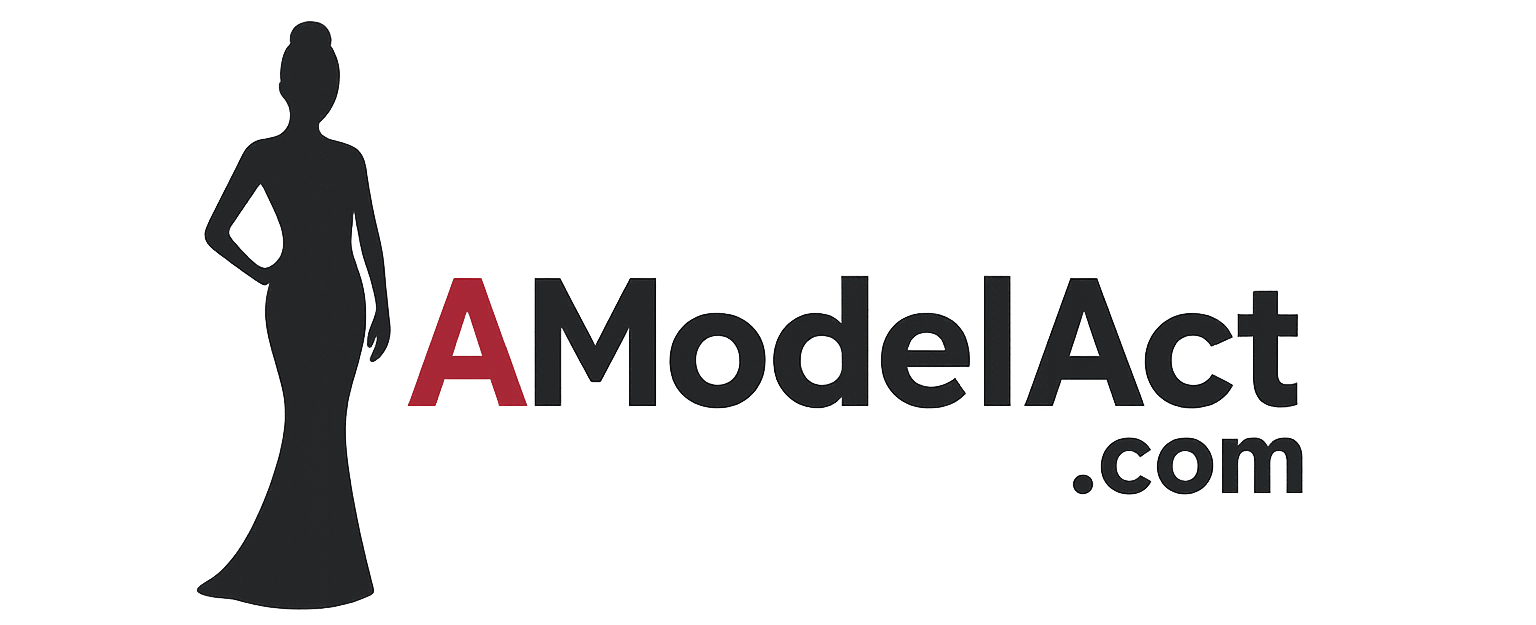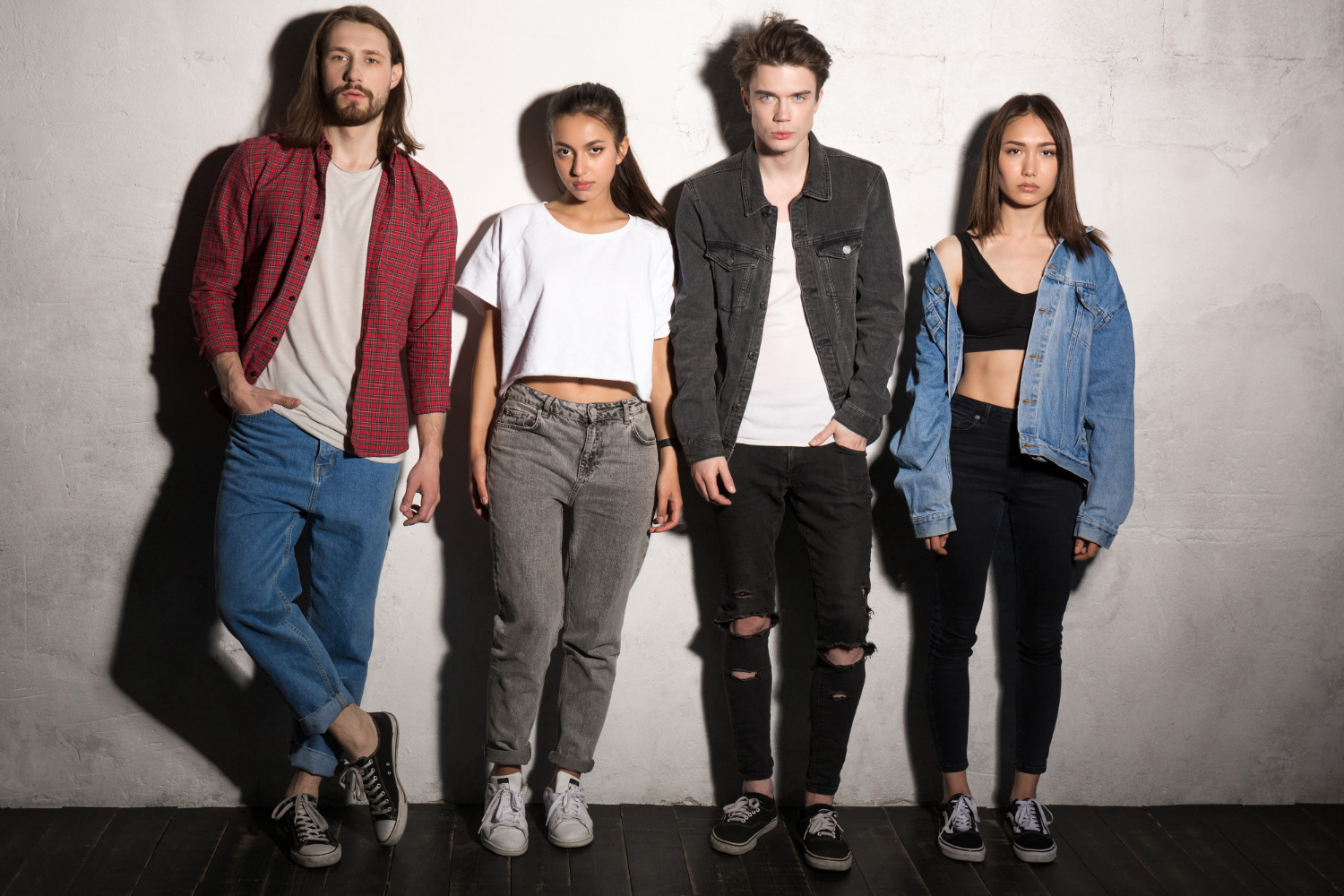Every modeling job comes with its own set of expectations, and what I wear can play a major role in how well I perform and how I’m perceived. The way I present myself on set, at castings, or during fittings speaks volumes about my professionalism and versatility. That’s why knowing how to dress for different types of modeling jobs is one of the skills I’ve made sure to master. Whether it’s a high-fashion editorial, a commercial shoot, or a runway fitting, dressing appropriately allows me to blend into the creative vision while still standing out as a professional.
Editorial Modeling
When I walk onto the set of an editorial job, I’m stepping into a world of creative storytelling. These shoots usually appear in magazines or fashion campaigns and involve high-concept looks, bold styling, and experimental poses. I don’t typically choose my wardrobe for editorial shoots, the stylist does, but how I show up to the job still matters.
Before the stylist even hands me an outfit, I make sure I arrive in a clean, neutral look. That usually means black leggings or skinny jeans and a fitted top with no distracting patterns or logos. My hair is freshly washed and free from heavy product, and my skin is clean and moisturized with little to no makeup. Editorial shoots can involve anything from structured designer pieces to elaborate couture, and I need to be a blank canvas ready for transformation.
The stylist’s job is to tell a visual story through clothing. My job is to wear those clothes in a way that makes them come alive, and that starts by being easy to work with, both in attitude and appearance.
Commercial Modeling
Commercial modeling is all about relatability. Whether I’m advertising food, tech, fitness, or household products, the look needs to be clean, friendly, and approachable. I’ve learned that how to dress for different types of modeling jobs like this requires subtle shifts in style based on the product or client.
For commercial jobs, I typically show up in well-fitted jeans, a simple T-shirt or tank top, and clean shoes, nothing flashy, just polished and neat. If the shoot requires a more casual vibe, I’ll bring sneakers or flats. If it’s for a business product or service, I might be asked to change into slacks or a blazer provided by the client.
While the final wardrobe is usually handled on set, bringing a few backup basics in neutral colors helps if the production team needs options. Being prepared shows that I understand the collaborative nature of the job, and it keeps things running smoothly.
Runway and Fashion Shows
Runway modeling demands precision, attitude, and presence. When I show up for fittings or rehearsals, I dress in a way that highlights my walk and frame. A tight black tank top or bodysuit paired with black skinny jeans or leggings is my go-to. For shoes, I always carry a pair of heels in my model bag, preferably black or nude stilettos with a clean silhouette.
At fashion week or other runway shows, the behind-the-scenes pace is fast and chaotic. Designers and dressers don’t have time to work around bulky clothes or difficult fabrics. Dressing simply and practically allows me to move quickly, change outfits, and stay focused on the show.
Knowing how to dress for different types of modeling jobs like runway also means paying attention to grooming. I avoid wearing heavy makeup or bold nail colors unless instructed. My job is to be adaptable and show that I can showcase a designer’s vision with clarity and professionalism.
Fitness and Sports Modeling
Fitness modeling requires a completely different wardrobe approach. Here, my physique and athletic ability are part of the product. Whether I’m promoting activewear, gym equipment, or a sports brand, the focus is on movement and energy.
I usually arrive in form-fitting activewear, leggings, a supportive sports bra or tank, and training shoes. These outfits not only highlight muscle tone and body structure but also allow for easy motion. If it’s a shoot that involves actual workouts or performance, I bring multiple outfits so I can change if I sweat or need variety for different scenes.
For this type of job, confidence and physical comfort go hand in hand. I choose clothes that flatter my shape but don’t restrict me. The fabrics need to stretch, breathe, and look sharp on camera. Preparing this wardrobe ahead of time shows the client that I understand the demands of the shoot.
Beauty and Skincare Modeling
Beauty shoots are all about close-ups. That means my face, hair, and skin are the stars of the show. I wear simple, soft clothing to these jobs, usually a neutral-tone button-up shirt or off-the-shoulder top that’s easy to take off without disturbing hair or makeup.
Since the focus isn’t on full-body shots, the outfit doesn’t need to be elaborate, but it should reflect the tone of the shoot. For skincare brands, I might lean into a fresh, clean look. For a luxury makeup line, I’ll coordinate with the stylist or makeup artist about color themes or concepts.
What matters most is that I avoid clothing that leaves harsh marks on my skin. Tight socks, elastic waistbands, or tops with heavy straps can leave imprints that show up on camera. I stay conscious of these small details because they can impact shoot timing and retouching.
E-Commerce Modeling
E-commerce modeling is about consistency. These shoots often require hundreds of outfit changes in a single day, especially for clothing brands’ online stores. When I go to an e-commerce job, I wear something that’s easy to remove and doesn’t affect my hair or makeup.
A loose top with buttons, leggings, and slip-on shoes make for a practical outfit. Since e-commerce is often fast-paced, I need to be efficient and cooperative on set. Bringing a robe or large cardigan to throw over myself between changes helps maintain modesty and comfort.
Even though the client provides all the clothing, how I show up sets the tone. Neat, neutral, and ready to move, that’s what I aim for. Dressing smartly for this type of modeling job shows that I can handle the demands of high-volume work with professionalism and ease.
Lifestyle and Catalog Modeling
Lifestyle shoots mimic real-life moments, walking through a park, cooking in a kitchen, relaxing on a sofa. The wardrobe is typically casual and brand-specific, meant to appeal to a wide audience. I usually come dressed in jeans, neutral layers, or casual dresses, depending on the weather and location.
Catalog modeling is similar, though a bit more polished. Outfits are meant to show clothes in their most wearable form. I make sure to be clean, comfortable, and prepared to try on multiple looks. I often bring a strapless bra, nude undergarments, and seamless items that won’t show through different fabrics.
These shoots often involve outdoor settings or props, so having the right base outfit and accessories helps the creative process move smoothly. Dressing practically also keeps me comfortable during long shoot days, especially in changing weather conditions.
High Fashion and Avant-Garde Shoots
High fashion shoots are where I get to experiment and transform. While the clothing is chosen by stylists and creative directors, I still make choices that help support the process. I wear no-makeup makeup, and I arrive in a clean outfit that doesn’t compete with the high-concept styling.
A sleek black dress or jumpsuit, low-profile shoes, and minimal accessories make it easier for hair, makeup, and wardrobe to take over. These shoots often include dramatic clothing, experimental makeup, or unusual props, so being low-maintenance helps the team focus on what matters.
How to dress for different types of modeling jobs like this means knowing when to step back. My outfit off-camera shouldn’t clash with the visual world being created on set. I blend in, listen carefully, and bring flexibility to the team.
Catalog and Lookbook Work
Lookbooks are used to present a designer’s collection in a clean, styled format. Unlike runway, which is about movement and performance, lookbooks are more about showing off garment details in a controlled, polished way.
Before stepping into the client’s clothing, I arrive in tight-fitting neutrals, leggings, a white or black fitted tee, and neutral shoes. These allow stylists to get accurate measurements and decide what will fit me best. My job is to make their clothes look flawless, so I avoid anything bulky or distracting before getting dressed.
Having proper undergarments, a strapless bra, and heel inserts can also be useful. I often end up wearing shoes that are either too big or tight, so being prepared helps me stay comfortable and professional throughout the shoot.
Final Thoughts on Dressing for Success
What I wear to a job says just as much as how I perform on camera. Knowing how to dress for different types of modeling jobs is part of being a reliable, professional model. It shows that I respect the client’s time, understand the purpose of the shoot, and care about the final outcome.
I keep a model bag stocked with essentials, heels, seamless underwear, makeup wipes, a hairbrush, deodorant, and backup outfits. That way, I can adapt quickly to whatever the day brings. Staying flexible, prepared, and intentional with my wardrobe choices helps me work with a wide range of clients while maintaining my unique style and brand.
From high fashion to lifestyle, editorial to commercial, each job is different, and dressing accordingly helps me meet those differences with confidence and grace. How to dress for different types of modeling jobs is a lesson I return to again and again, refining my approach with every experience.

